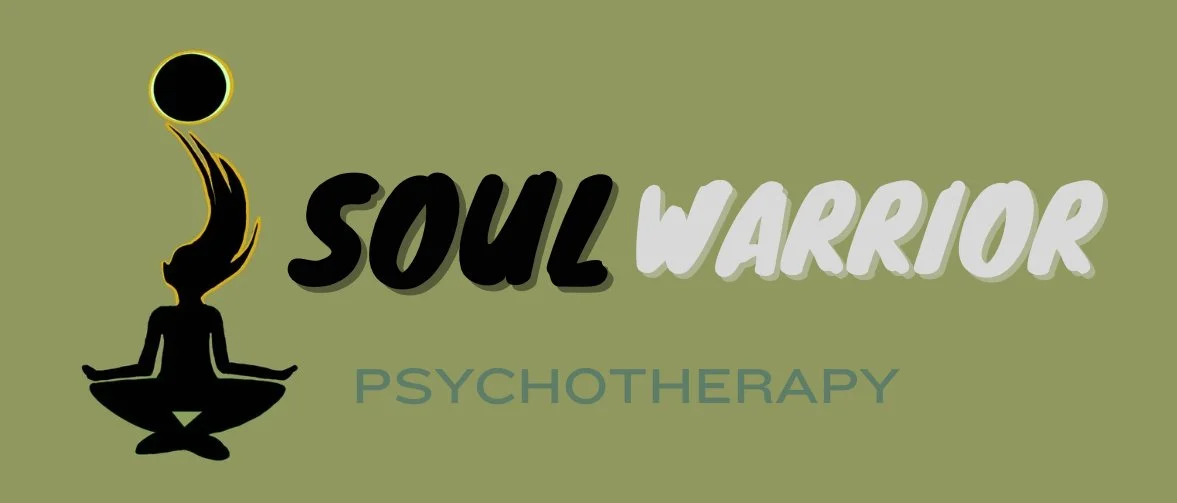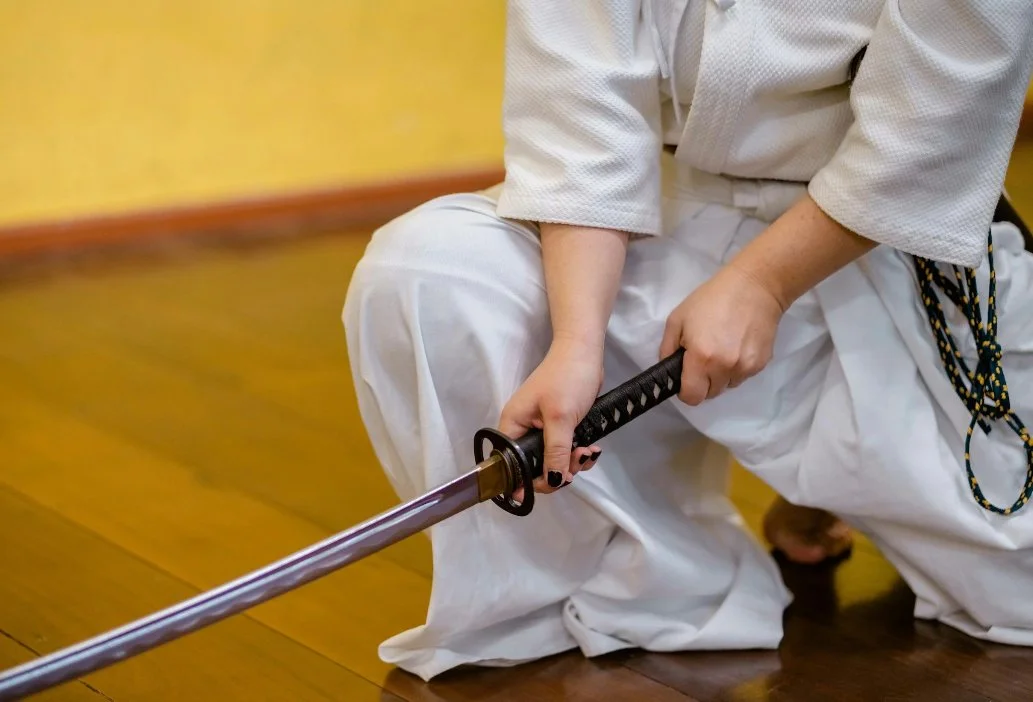Surviving Spiritual Warfare of the Mind:
The Soul Warrior Approach to Healing
Life can feel like a spiritual battlefield yet even in the quiet places, the soul warrior rises, steadying their spirit before the next wave hits.
War is not an unknown concept. It is one of the most primal truths we live with. Battles have always existed for territory, for resources, for relationships, in sports, in careers, between life and death, light and dark, right and wrong, pain and pleasure. For centuries, human beings have understood the ancient rhythm of yin and yang, the delicate balance between push and pull, external events and internal realities.
We are creatures of survival. Our minds have become prediction engines, scanning ahead for danger, rehearsing possibilities, strategizing how to stay safe. We plan tomorrow. We brace for ten years from now. We imagine the worst before we even arrive in the moment we are actually standing in.
And in all that overthinking, we forget our power.
We forget our presence.
We forget our ability to respond from wisdom instead of fear.
Imagine a child whose guardian is absent. That child becomes the protector, scanning the environment, staying hyperaware, controlling every detail to stay safe. This is what happens when we forget who is holding the bigger picture and who orchestrates the rising sun, the moon phases, the cosmic choreography of seasons, tides, and synchronicity. Whether you call that force God, Universe, energy, consciousness, or the subconscious mind, something larger is guiding the dance.
To master that dance, like any discipline, requires focus and training. When you pay attention, you start to see the mechanics of the game we’re in. And one truth reveals itself again and again:
The more you fight, the more tangled you become.
The more you surrender, the more things flow.
Just like in martial arts, resistance and surrender both have purpose.
A grappler knows when to apply pressure and when to yield and redirect energy, using the opponent’s force instead of clashing with it.
In Aikido, the art is not to attack but to blend with the incoming energy and guide it into something harmless.
Life works the same way.
There is a time to resist, and there is a time to let go. A warrior knows the importance of both.
This article explores the inner battlefield and the quiet wars of the mind, the soul-level conflicts, and why you must awaken your Soul Warrior.
Deep within the mind, our inner child stands before the shadows we once feared. Every monster we meet is a memory asking to be understood.
Even when we appear still, the mind shifts between versions of us, the one we show and the one we hide, the battle within is often fought in the quiet turn of a thought.
Spiritual Warfare of the Mind: The Battle Within
Spiritual warfare of the mind isn’t religious; it’s psychological, emotional, and existential. It is the internal struggle between old conditioning and new growth, between fear and expansion, between illusion and truth.
It shows up as:
• Feeling stuck or unable to move forward
• Spiraling into negative thoughts or emotional overwhelm
• Avoidance, shutdown, or self-sabotage
• Old trauma patterns that try to “protect” you by limiting you
In mythology, this is the stage where the Hero meets the Shadow: the parts of yourself that rise up not to destroy you, but to test you.
Every hero story, from Hercules to Mulan to the Bhagavad Gita, begins with inner conflict before any external battle begins.
Recognizing these patterns is the start of reclaiming your inner power.
Spiritual battles require spiritual weapons, Soul Warriors train their focus to see through the minds illusions.
The Mechanics of the Mind: ACT, Energy, and the Warrior’s Discipline
According to ACT (Acceptance and Commitment Therapy), cognitive defusion reveals a truth the ancients already understood:
The mind does not respond to “good” or “bad.” It responds to “attention.”
What you resist intensifies.
What you cling to distorts.
What you observe gently loses its power.
If you resist a thought forcefully, your brain interprets it as important and amplifies it.
This mirrors the Buddhist teaching that the mind is like water:
The more you splash and thrash, the more distorted the reflection.
Calm the water, and the truth reveals itself.
The opposite is equally true:
Intentionally focus on gratitude, purpose, abundance, and your reality begins to shift in that direction.
Psychology calls this attentional bias.
Spirituality calls it manifestation.
Mythology calls it destiny aligning.
Warriors call it training the mind.
A sword fighter doesn’t only train the arm they train the mind, the breath, the presence.
Your thoughts are your sword.
Your awareness is your stance.
Sometimes the fierceness battles are met in stillness. Sitting with awareness, the Soul Warrior regulates the mind steadies the body and prepares to act with clarity.
The Soul Warrior: A Mythic, Psychological, and Spiritual Archetype
Every culture has a version of the Soul Warrior:
• The Samurai who lives by Bushidō honor, discipline, presence.
• Arjuna in the Bhagavad Gita, frozen by internal conflict until guided back into truth and alignment.
• The Shaolin monk, strong yet surrendered, using discipline to cultivate inner freedom.
• The Archangel Michael archetype courage meeting darkness not with fear, but clarity.
The Soul Warrior doesn’t fight with fists.
They fight with awareness, regulation, truth, and surrender.
They know:
• When the nervous system flares, they do not escalate they regulate.
• When fear arises, they lean into faith, not force.
• When chaos swirls, they return to presence, not control.
• When the mind tries to dominate, they shift into soul-centered truth.
This is not passivity.
This is mastery.
Training the warrior within, begins with stillness awareness, and then willingness to show up.
Training the Soul Warrior: How We Work at Soul Warrior Psychotherapy
At Soul Warrior Psychotherapy, we blend therapeutic science with the archetype of the warrior, helping you develop:
1. Awareness (The Warrior’s Sight)
Seeing your patterns clearly without judgment like a martial artist reading an opponent’s stance.
2. Mindful Action (The Warrior’s Strike)
Acting intentionally instead of reacting from fear or trauma.
3. Inner Strength (The Warrior’s Breath)
Building resilience, emotional stamina, and nervous system flexibility.
4. Self-Compassion (The Warrior’s Heart)
Balancing strength with softness, fierceness with tenderness like a warrior who knows when to sheath the sword.
This is not about fighting your mind harder.
It’s about learning to move with it, like a martial artist blending with energy instead of colliding with it.
Why Soul Warrior Psychotherapy is different:
This practice combines the metaphorical concept of spiritual warfare with evidence based therapy, focusing on empowerment growth and transformation. The goal isn’t just symptom relief. It’s helping you build the inner strength to survive, adapt, and thrive.
Practical Ways to Begin Surviving Your Inner Battles
To begin training your Soul Warrior:
• Ground your body before responding. Breath is the warrior’s first weapon.
• Identify your closing forces the way a strategist identifies enemy formations.
• Observe thoughts as clouds passing, not commands.
• Build rituals that root you in presence, discipline, and calm.
• Seek guidance when the battlefield becomes foggy or overwhelming.
Even the greatest warriors have teachers.
No one trains alone.
The soul warrior awakens rising from the battle within.
The Path Forward: Reclaiming Your Inner Power
The spiritual warfare of the mind is a universal human experience. But you are not powerless.
With the right tools, awareness, and training, you can return to your center and reclaim the strength that has always been yours.
At Soul Warrior Psychotherapy, we help you train your warrior, not to fight harder, but to fight with clarity, alignment, and truth.
This is the Soul Warrior Way.
This is how you survive spiritual warfare.
This is how you return home to yourself.







